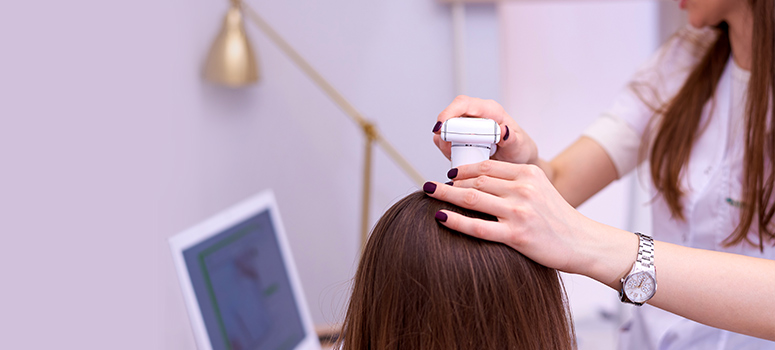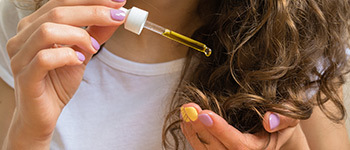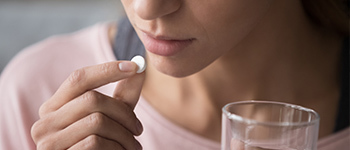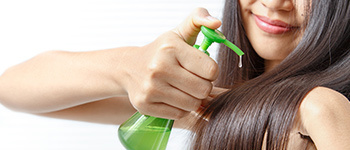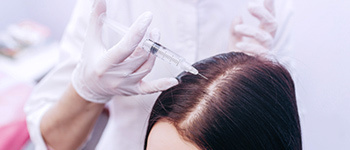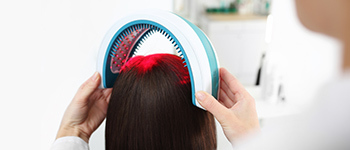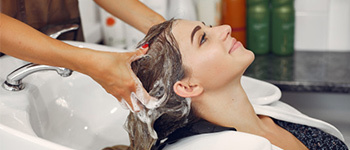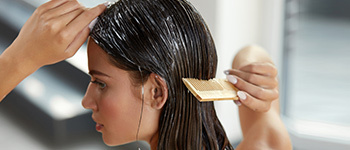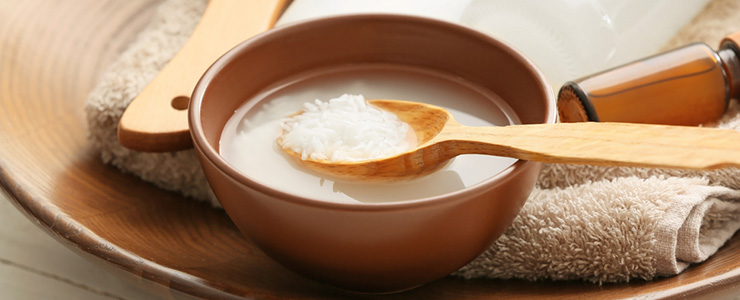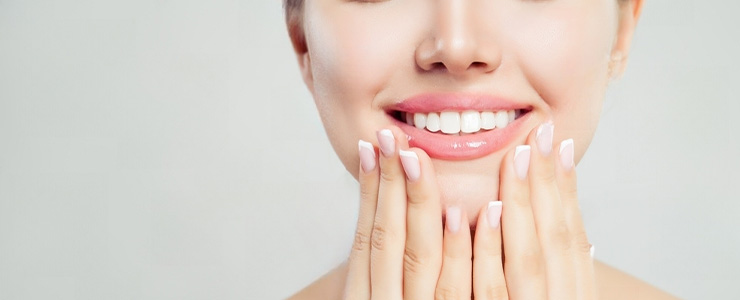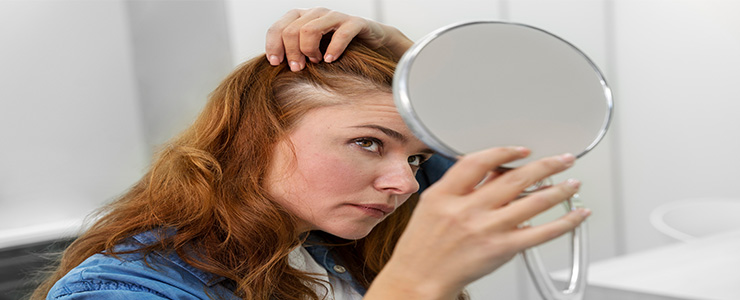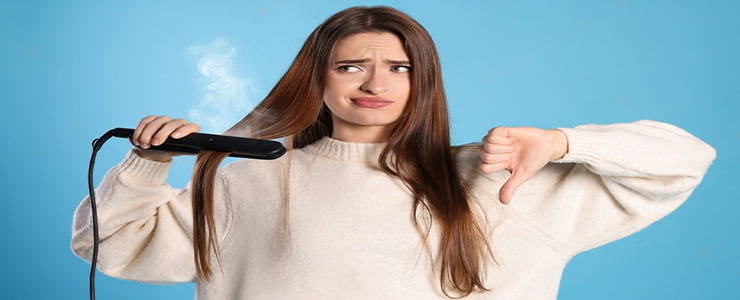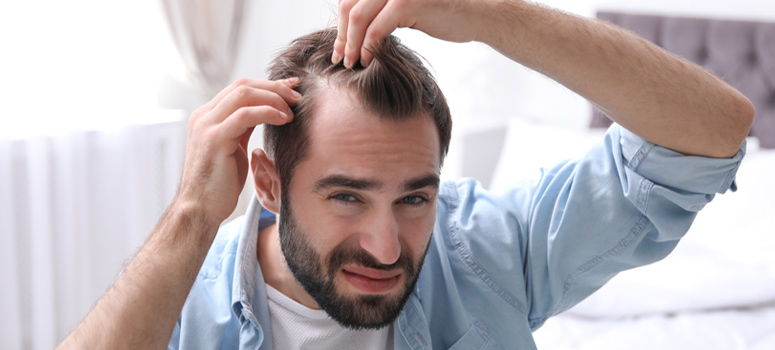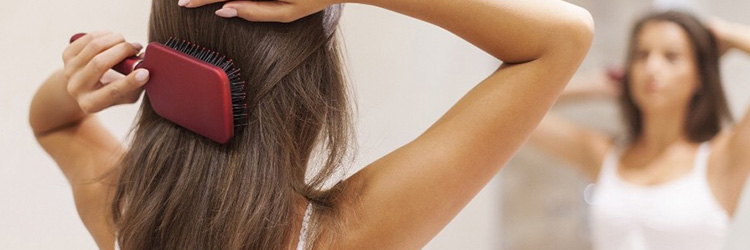Hair thinning and hair loss is a universal problem that torments around 60% of the world’s female population. If you’ve woken up to hair on your pillow, watched strands clogging the drain, or been horrified at the clumps stuck in your brush, you’re not alone.
The truth is, losing hair is a natural part of the hair growth cycle – and up to 100 strands a day is perfectly normal. Now, the real issue arises if you’re shedding an unnatural number of hair per day, and when new hair doesn’t grow back, or grows back thinner, weaker and shorter. You’ll notice a more visible scalp, which is a sign of temporary or permanent hair loss.
So What Are The Causes of Hair Loss in Women?
Factors That Cause Hair Loss

Age

Heredity

Hormonal Imbalances

Medications

Nutrient Deficiencies

Excessive Styling

Pollution

High Stress

Physical Trauma

Diseases

Scalp Infections
The same hormones that control human hair growth can be responsible for hereditary hair loss, such as female pattern baldness (androgenic alopecia). If your hair follicles have a higher sensitivity to dihydrotestosterone (DHT), hair production gets affected and the new hair grows brittle and shorter until growth is halted altogether.
That’s why it’s important to visit a dermatologist to accurately diagnose the cause of hair thinning, whether it’s a result of heredity, hormones, an underlying health condition, stress, or poor lifestyle habits. Based on the diagnosis, your doctor will recommend one or a combination of the following hair thinning treatments.
Hair Thinning Treatments For Women
Minoxidil Topical Solution
- Minoxidil is recommended as a hair loss solution for women with androgenic alopecia or.
- Sold as an over-the-counter medication, this vasodilator dilates blood vessels and increases blood flow to the scalp to regulate the hair growth cycle.
- Minoxidil has to be applied regularly on your scalp for at least 6 months for noticeable results.
- It’s normal to experience hair loss in the initial 2-3 months of the treatment, as the old hair sheds before new hair can grow.
Possible Side Effects
- Scalp irritation
- Hair growth on parts of the skin that came in contact with Minoxidil
- Rapid heart rate or tachycardia
Spironolactone Pills
- This prescription drug combats hair loss by addressing hormones.
- It binds to androgen receptors and desensitizes the body towards testosterone.
Possible Side Effects
- It’s best to consult a dermatologist to get an idea of the possible risks and side effects.
Topical Tretinoin
- Retin-A, or topical tretinoin may be prescribed in combination with Minoxidil as a hair thinning solution for women with androgenic alopecia.
Possible Side Effects
- In some cases, tretinoin has been known to cause hair loss.
Corticosteroid Injections
- Corticosteroid injections are prescribed as a hair thinning treatment for women with alopecia.
- The treatment can be repeated every 4 to 6 weeks and hair growth is noticeable in as early as 4 weeks.
Possible Side Effects
- Thinning of the skin on the scalp
- Skin atrophy
Platelet-Rich Plasma (PRP) Therapy
- PRP works as a relatively cost-effective hair loss solution for women.
- The therapy involves extracting the patient’s blood, processing it, and injecting it back into the scalp.
- Multiple sessions of PRP therapy are conducted within a period of 4-6 weeks and thereafter, maintenance is needed every 4-6 months.
Possible Side Effects
- Blood vessel or nerve injury
- Tissue scarring
- Infection
Light & Laser Therapy
- Light emitted from laser devices can stimulate hair growth in women with androgenic alopecia.
- This treatment is administered 2-3 times a week, and results may be noticeable after several weeks to a few months.
Possible Side Effects
- It’s best to consult your skincare practitioner to get an idea of the possible risks and side effects.
Ketoconazole Shampoo
- An anti-fungal shampoo with 2% ketoconazole may be prescribed as a hair thinning treatment for women with androgenic alopecia.
- Ketoconazole can help decrease the production of testosterone and androgens that are responsible for hair loss in women.
Topical Anthralin
- Anthralin is a safe and effective hair loss treatment for women with alopecia areata.
- Apply it once a day, starting with a period of 5 minutes and slowly extending it up to an hour.
- After application, clean your scalp with soap and cool water.
- New hair growth may be visible in 2-3 months.
Most of the times, the factors for hair thinning are directly related to the lifestyle we lead. In this case, identifying the cause and incorporating healthier changes will definitely solve your hair loss problem.
5 Healthy Lifestyle Habits to prevent Hair Loss
EAT A BALANCED DIET
- Talk to your doctor to check for any nutritional deficiencies.
- Include healthy hair nutrients like proteins, vitamins B3, B5, B9 and E, zinc, magnesium and iron in your diet.
- Drink plenty of water to support cellular health and growth.
CUT DOWN ON ALCOHOL & SMOKING
- Smoking and alcohol blocks the absorption of nutrients, leading to unhealthy hair.
- If you’re struggling with hair loss, it’s advisable to quit smoking and limit your alcohol intake.
MANAGE STRESS
- Stress is the biggest culprit of hair loss – it causes oxidation which affects the healthy functioning of cells.
- It’s important to manage stress by getting at least 7-8 hours of a good night’s sleep, regularly exercising, and practicing meditation.
AVOID EXCESSIVE HAIR STYLING
- Tight hairstyles, permanent treatments, heat styling, and chemical dyes or bleaches can damage your hair follicles, causing hair loss.
- Don’t comb wet hair or use a hair dryer. Let your hair air dry and be gentle when brushing.
TAKE CARE OF YOUR HAIR
- Gently massage your scalp to increase blood circulation and stimulate your hair follicles.
- Protect your hair against sun exposure by wearing a scarf, hat or cap.
Hair thinning is a serious matter, and it’s best to address it at its roots and act upon it right away. Additionally, a hair-transplant is another option for persistent and irreversible hair loss.

